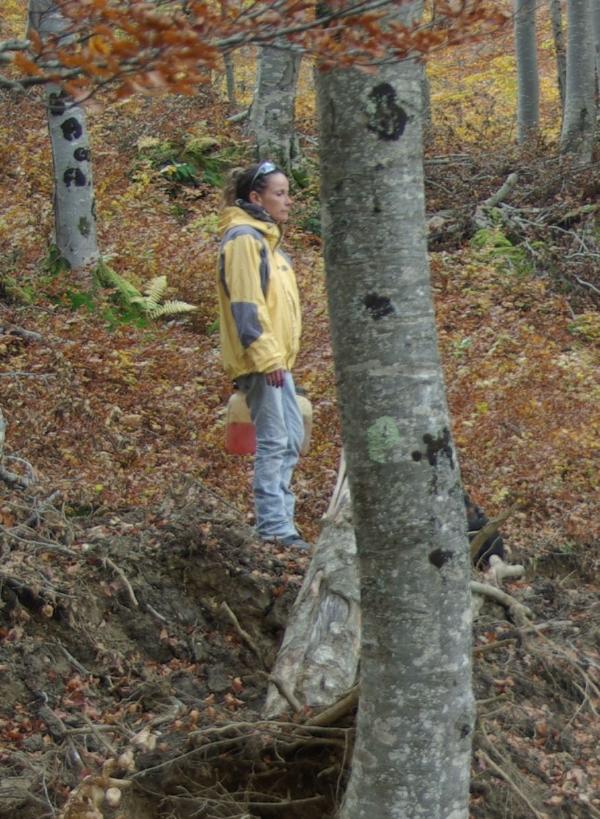-
Partager cette page
Past disturbances shape present tree size distribution in European temperate primary beech-dominated forests
Article coécrit par Mélanie Saulnier
Publié le 12 novembre 2024 – Mis à jour le 12 novembre 2024
Primary beech-dominated forests exhibit complex patterns in tree size distribution. Disturbance severity significantly influences present tree size distribution. The interaction between disturbance severity and timing is crucial in shaping forest structure.

Abstract
Natural disturbances play a crucial role in shaping forest structural dynamics, directly influencing stand structural heterogeneity. In European forests, disturbances occur across varying scales, from small patches to entire landscapes, significantly affecting ecosystem dynamics. However, detailed information on historical disturbances and their specific effects on forest structure, particularly tree size distributions in primary mountain forests, remains limited. With global change altering the severity and frequency of these disturbances, understanding their long-term impact has become increasingly critical for forest management and conservation.
We addressed two main questions:
(1) Is there variability in tree size distributions at both the plot and stand level? and
(2) which specific aspects of disturbance regimes, such as severity and timing, are most influential in shaping these distributions? To address these questions, we analyzed data from 11,755 trees across 23 primary European beech forest stands in the Carpathian Mountains of Romania (139 plots) and Slovakia (99 plots). Using linear mixed-effects models, we assessed how historical disturbances have influenced current tree size distributions.
Our results showed that tree size distributions across the Carpathians show variability, with the most common pattern being close to a reverse-J shape, indicative of uneven-aged forest structures.
Modelling analyses revealed that disturbance severity and timing are key factors influencing present tree size distribution patterns at small scales in the Carpathian Mountains. High-severity disturbances generally result in unimodal or bimodal distributions, while low-severity disturbances are associated with reverse-J shaped patterns.
Specifically, at the plot level (small scale), we observed that last disturbance severity, maximum disturbance severity, and time since the last disturbance all significantly impacted tree size distributions driving them away from a reverse-J shape.
Finally, linear mixed-effects modeling revealed that disturbance severity, time since the last disturbance and the interaction between the two were the most influential factors shaping present tree size distributions. Our findings highlight the dynamic nature of forest ecosystems, emphasizing the critical role of historical disturbances in shaping present tree structure and the long-term development of forest stands.
Lire l'article en intégralité sur le site de sciencedirect
Natural disturbances play a crucial role in shaping forest structural dynamics, directly influencing stand structural heterogeneity. In European forests, disturbances occur across varying scales, from small patches to entire landscapes, significantly affecting ecosystem dynamics. However, detailed information on historical disturbances and their specific effects on forest structure, particularly tree size distributions in primary mountain forests, remains limited. With global change altering the severity and frequency of these disturbances, understanding their long-term impact has become increasingly critical for forest management and conservation.
We addressed two main questions:
(1) Is there variability in tree size distributions at both the plot and stand level? and
(2) which specific aspects of disturbance regimes, such as severity and timing, are most influential in shaping these distributions? To address these questions, we analyzed data from 11,755 trees across 23 primary European beech forest stands in the Carpathian Mountains of Romania (139 plots) and Slovakia (99 plots). Using linear mixed-effects models, we assessed how historical disturbances have influenced current tree size distributions.
Our results showed that tree size distributions across the Carpathians show variability, with the most common pattern being close to a reverse-J shape, indicative of uneven-aged forest structures.
Modelling analyses revealed that disturbance severity and timing are key factors influencing present tree size distribution patterns at small scales in the Carpathian Mountains. High-severity disturbances generally result in unimodal or bimodal distributions, while low-severity disturbances are associated with reverse-J shaped patterns.
Specifically, at the plot level (small scale), we observed that last disturbance severity, maximum disturbance severity, and time since the last disturbance all significantly impacted tree size distributions driving them away from a reverse-J shape.
Finally, linear mixed-effects modeling revealed that disturbance severity, time since the last disturbance and the interaction between the two were the most influential factors shaping present tree size distributions. Our findings highlight the dynamic nature of forest ecosystems, emphasizing the critical role of historical disturbances in shaping present tree structure and the long-term development of forest stands.
Lire l'article en intégralité sur le site de sciencedirect





